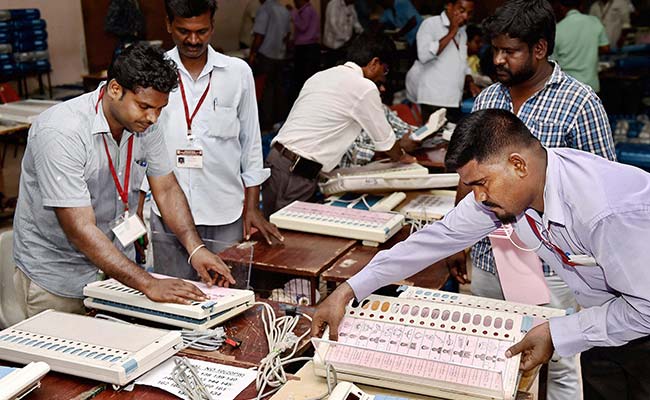“Paper trail” is an indispensable requirement of free and fair elections: Supreme Court judgement, 2013

The National Committee on Electoral Reforms set up by the Indian Radical Humanists Association has written to the Chief Election Commission (CEC) asking it to ensure that as per the Supreme Court’s 2013 order, only electronic voting machines (EVMs) equipped with voter verifiable paper audit trail (VVPAT) are used in the forthcoming Assembly elections in Gujarat.
Else, the Association has demanded that the CEC revert to paper ballots. It has also expressed the view that paper ballots are the ideal and the safest way for conducting elections in a democracy.
The letter addressed to Dr Nasim Zaidi, Chief Election Commissioner dated April 5 has sought a meeting with the CEC to press home the demand.
A note attached to the letter draws the CECs attention to the October 2013 Supreme Court judgement on the use of EVMs.
A writ petition was filed in the apex court in 2009 questioning the claim that EVMs cannot be tampered with or manipulated. The Supreme Court disposed of the petition asking the petitioners to pursue the matter with the CEC.
The matter was then taken up by political parties with the CEC. The latter appointed a technical experts committee to look into the complaints. Following trials the experts committee opined that EVMs equipped with VVPAT must be used during elections and the Conduct of Election Rules, 1961 was accordingly amended.
Thereafter followed an important judgment of the Supreme Court in October 2013, in the case of Dr Subramanian Swamy vs Election Commission of India wherein the apex court ruled:
Taking a pragmatic view of the matter the Supreme Court gave discretionary powers to the CEC to introduce EVMs with VVPAT system to the extent practical for the 2014 general elections. It simultaneously directed the government of India “to provide required financial assistance for procurement of units of VVPAT”.
The CEC had told the court the purchase of VVPATs for all 13 lakh EVMs will cost around Rs 1,690 crore. This by no means is an astronomical figure.
Once again, the CEC has been faced with allegations of large scale tampering of EVMs during the recently concluded Assembly elections in several states, including UP and Punjab, and the demand by several political parties to revert to paper ballots.
While insisting there was no tampering, the CEC has also expressed its helplessness in procuring VVPAT units for all EVMs since the Centre has not made funds available.
But as reported by Sabrang India, with clear evidence of tampering of an EVM in MP recently, the reliability of EVMs is once again in serious question.
“The CEC does not have to beg the Centre for funds. Given the clear directive of the Supreme Court in 2013 it must demand it”, Gautam Thaker, national president of the Indian Radical Humanists Association told Sabrang India.
EVMs have been used for elections in India since 1989.
Concerned with ensuring free and fair elections in the face of recurring allegations of tampering of EVMs, the Association appointed a National Electoral Reforms Committee headed by Justice Hosbet Suresh, former judge of the Bombay High Court. The other members of the Committee are Dr Jagdeep Chhokar (ADR), Suresh Mehta former chief minister of Gujarat, Sanjay Parikh, Senior Supreme Court lawyers and others. The letter to the CEC follows the deliberations of the Committee.